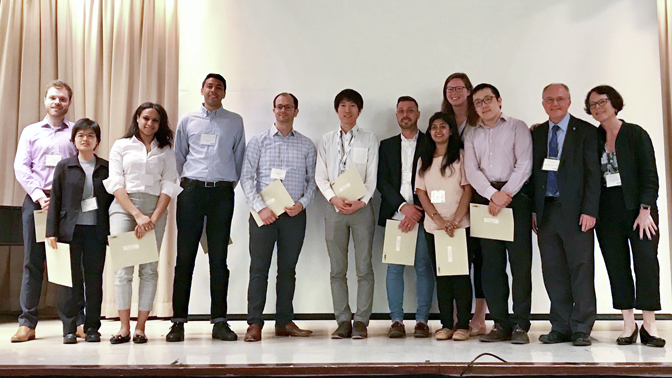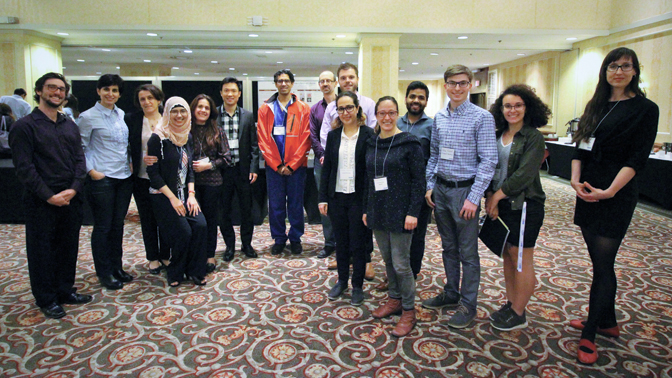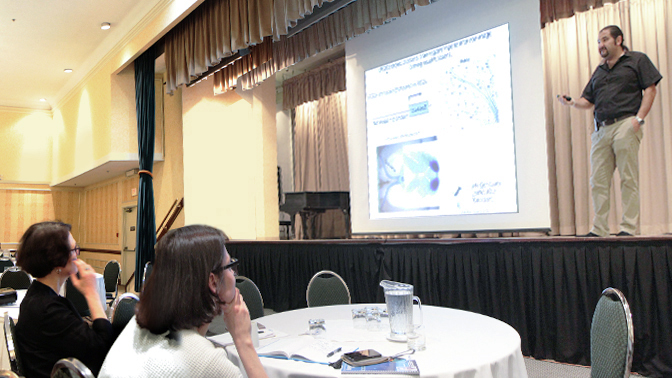
Krembil’s annual Research Day was held on May 23rd and was attended by approximately 200 researchers, trainees and staff, as well as Dr. Bradly Wouters, UHN’s EVP of Science and Research.
Since the event’s creation in 2000, Research Day has been and continues to be devoted to showcasing the hard work of Krembil graduate students and postdoctoral fellows. The 2018 edition gave 78 trainees the opportunity to share their research with their colleagues through a variety of formats including oral presentations, posters and three-minute elevator pitches. At the end of the day, those who did the best job presenting their work were rewarded with an honorary certificate and a cash prize. Krembil trainees were also instrumental in making Research Day happen: they played a leading role in organizing the day, designing the front cover of the Research Day booklet and hosting the keynote speaker.
This year’s invited speaker was Dr. Samer Hattar, Chief and Senior Investigator of the Section on Light and Circardian Rhythms (SLCR) at the National Institute of Mental Health. Dr. Hattar is most well-known for his research characterizing a light-sensing cell in the eye known as the intrinsically photosensitive retinal ganglion cell (ipRGC). His keynote address at Krembil Research Day focused on his latest work showing how light can influence mood and learning through ipRGCs and specific brain regions.
Dr. Donald Weaver thanks all of the individuals who made this year’s Research Day a success, including the Trainee Affairs Committee and its Chair, Dr. Mary Pat McAndrews; the Krembil Administration team; the presentation judges; and the Nadler Family, whose generous donation funded the presentation prizes.
Congratulations to everyone who presented their work!
A complete list of presentation awardees can be viewed here.
View a video of the Krembil Research Day here.

Trainees, staff and researchers at Krembil Research Day. Courtesy of Travis Boyco.

Dr. Samer Hattar, Chief and Senior Investigator at the National Institute of Mental Health, presenting his research findings during his keynote address.




